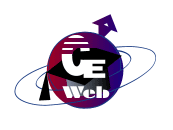| |
|
[Meaning in
Context] [Word Form]
[College Life]
[Movies]
|
|
|
|
Advantage of reading through context:
|
|
You are encouraged
to read through context because it trains you to read in
large quantity with good understanding. By the time you
have accumulated quantity of information and knowledge,
you will use dictionary less and less. Accordingly, the
first benefit for you to judge meaning directly from
context rather than from dictionary is to speed up your
reading since you won’t frequently stop to consult
dictionary. In addition, chance to misunderstand the
author is small since you are able to judge the
relationships of words and sentences - able to link
relevant ideas together. As a result, it also raises
quality of your reading comprehension. Finally, the
four such
strategies will facilitate
your comprehension of difficult readings, to enable you
to use words ‘precisely’ to fit the various situations
you are in, and to increase the quantity of your
vocabulary so that you will have adequate words to
express different ideas with in-depth meaning. |
|
|
|
5 strategies to determine meanings of
new words:
|
|
Now, I’d like to
explain to you how to understand the meaning of new
words, terms, or concepts from context. When you
encounter an unfamiliar word, you can often determine
its meaning by resorting to helpful clues and cues. The
words “before” or “after” a new word will often give you
clues to its meaning. So context (文意)
contains those clues or cues (線索;
提示)
in the content (內容)
you’re reading. In other words, context is made up of
relevant words and sentences which connect separate
parts into a united whole. Therefore, the cues or clues
state relationships of words and sentences. For example,
you read a sentence like this: “Pot promotes further
drug use problems.” To your knowledge, the basic meaning
of ‘pot’ is ‘鍋子’
or ‘一壺茶’
such as a pot of tea. But the sentence is not talking
about cooking or making tea. But if you read carefully,
you find another important idea in this sentence, which
is ‘drug use problem’. So could ‘pot’ have something to
do with ‘drug’? To validating your guessing, you must
continue to read the rest paragraphs and trace relevant
cues or clues to support your understanding. Then you
read more messages about this ‘pot’ which could be
related to ‘drug’. Then you read marijuana and find it
appears many times in the article you are reading. And
this article explains people’s views to be against using
the drug for medication purpose to treat diseases. As a
matter of fact, this drug is used by the majority users
for recreational purpose and eventually leads to drug
addiction to harm health. The message states such theme
as so and so. Therefore, it is easy for you to
understand that ‘pot’ in this context is a kind of drug
– marijuana, not a container to hold food or beverage.
But you will wonder also why ‘pot’ is related to drug? A
person smart like you must know by now that ‘pot’ in
this context is a container used to burn marijuana
before users can smoke it. Pot in this situation is just
like a pipe for smoking tobaccos. |
|
|
|
In this way, this
strategy promotes understanding of your reading.
Meanwhile, ‘pot’ is increased into your vocabulary bank
when using in different context. Moreover, when you are
analyzing relationships of words such as locating cues
and clues, you are learning how to precisely use a word
with good logic. This is a very important skill for
reading and writing. The followings are the five
strategies to identify cues and clues in context: |
|
|
|
|
|
|
|
|
|


